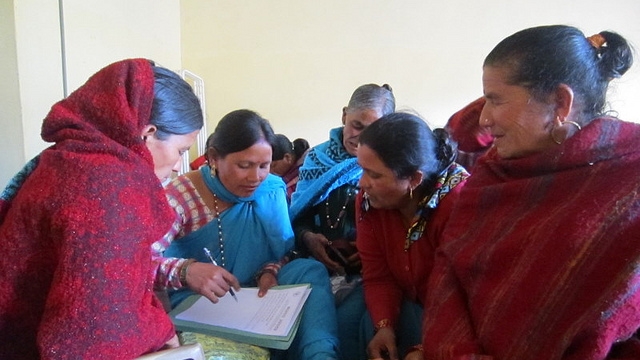
Community engagement models can lead to improved health in disadvantaged populations
This article is part of a series of articles on stakeholder and community engagement.
Community engagement is widely used in health promotion, research, and policy making to address a range of health issues including obesity, cancer, heart disease, diabetes, and mental illness.
However, the components of community engagement models associated with improved health have been poorly understood. A recent study1 sought to address this knowledge gap through the conduct of a systematic review.
Community engagement definition and models
In a health context, community engagement can be defined as2:
..the process of working collaboratively with and through groups of people affiliated by geographic proximity, special interest, or similar situations to address issues affecting the well-being of those people.
Community engagement models being used in health studies include:
CBPR is often used synonymously with participatory action research (PAR) and action research. The paper authors advise that:
In contrast to the other CE models, CBPR has sought to bridge the gap between research and practice through equitable engagement of the community to eliminate disparities in population health. CBPR has achieved this by addressing power imbalances and enabling knowledge exchange, resulting in its wide uptake as an appealing CE approach across various cross-cultural, diverse, and disadvantaged settings. Additionally, Rapid Assessment Response and Evaluation (RARE), a component of PAR, has emerged as a valuable public health research tool, particularly among ethnic populations, and incorporates the use of datasets, community participation, and evaluation.
Systematic review
The systematic review was conducted in accordance with the Preferred Reporting Items for Systematic reviews and Meta-Analyses (PRISMA) guidelines3.
A keyword search of both peer-reviewed and non-peer-reviewed English language articles for the period January 1995 to June 2015 was conducted. Inclusion and exclusion criteria were applied, and article quality was assessed. The search yielded 3,963 articles, and after removal of duplicates and screening, 99 articles remained. These were checked against the inclusion and exclusion criteria, which saw the list reduced to 18 articles. A search of the reference lists of the 18 articles led to the inclusion of six further articles, making a total of 24 studies. Of these, 17 were conducted in the United States, and there was one each in Canada, Bangladesh, Africa, China, the United Kingdom, Iran, and India. When article quality was assessed, 14 were found to be of good quality (58%), six (25%) were moderate in quality, and four (17%) were poor in quality.
Results
Overall findings from the systematic review
- [Community engagement] approaches in 21 out of 24 studies … led to improvements in health behaviours, public health planning, health service access, health literacy, and other health outcomes
- For [community engagement] interventions that had positive impacts, components closely associated with improved health and health behaviours included incorporating the voice and agency of indigenous and ethnic communities in the research protocol, real power-sharing, bidirectional learning, and needs assessment.
- [Community engagement] models that did not improve health behaviours were affected by lack of community involvement in formative research and inadequate needs assessment
- CBPR [is] the most commonly used [community engagement] model
- Contrary to reports that CBPR has been effective only in achieving high retention rates and not in data analysis, interpretation, or dissemination, … six studies … involved community partners in these stages of the research process as well
- [Six] other CE models … have successfully addressed health disparities among disadvantaged populations—FOCUS (Families in Our Community United for Success), the Culturally appropriate Diffusion Communication (CDC), and ANGELO (Analysis Grid for Elements Linked to Obesity), community empowerment, community health worker (CHW), and participatory action cycle
- Although most of these models share similarities with CBPR, they lack three components that were key drivers of success in CBPR—engagement of community partners in all stages of research development including dissemination of findings, facilitating knowledge exchange between community and academic partners, and achieving balance between research and action
- Although [community engagement] is useful in reducing health inequalities, it is labour-, cost-, and time-intensive, and its effectiveness varies according to the type of intervention and [community engagement] model used
- [High-quality community engagement] is often compromised by a lower quality research methodology
- [Randomized control trials] are not the most effective approach to evaluate [community engagement] interventions
- Several gaps in the current measurement of [community engagement] in [health] intervention studies suggest the need for development of innovative frameworks and approaches to demonstrate the effect of CE on health outcomes in a comprehensible rigorous way.
Community engagement model components impacting study outcomes
- [There was] a link between low levels of [community engagement] (information-sharing and consultation) and poor study outcomes in three studies
- On the other hand, studies achieving high levels of CE such as collaboration, partnerships, and empowerment showed positive study outcomes
- A number of studies … found that [community health workers] can be successful in addressing health disparities among ethnic populations … [resulting in] improved programme feasibility and impact by enhancing the relevance of health promotion messages, fostering improved health behaviours, overcoming cultural and access barriers, and encouraging participant engagement
- [The] ongoing training of [community health workers] and the quality of relationships between them and the participants affected study outcomes
- Several studies … used a combination of CE approaches such as CBPR to develop collaborative partnerships and [community health workers] to deliver health interventions … [which] had a two-fold benefit, where the community partners facilitated recruitment and training of [community health workers], while [community health workers] accessed ‘hard to reach’ participants experiencing health disadvantages and enabled their retention
- Another [community engagement] indicator of study success … was collaborative partnerships, … [and it was] found that a range of [community engagement] tools such as surveys, forums, and photovoice enabled the establishment of these partnerships
- [New] partnerships between community, government, and academic stakeholders and the use of existing infrastructure such as faith networks, park authorities, and tribal agencies were responsible for the post-intervention sustainability of programmes
- [Among] ethnic and tribal communities … post-programme intervention effects were directly related to their cultural acceptability, the existence of a historical collaborative partnership, and the engagement of an influential community partner such as a government organisation or tribal agency in all stages of the research
- Some … model-specific success indicators [were identified]
- [Identifying] needs unique to each ethnic community during the formative research phase was directly responsible for positive outcomes
- Overall, [community engagement] models identified in [the] review employed collaborative partnerships, bicultural [community health workers], community participation, and power-sharing as key components of health interventions, a finding consistent with current evidence.
Non-health impacts of community engagement
- [The] building of social capital, community capacity building, and empowerment of community members [leads] to community championship
- CBPR enabled external partner organisations to achieve their goals by facilitating trust-building between native and academic communities
- [Community engagement facilitates] =referrals to social services, [increases] the quality of local services, and [enables] linkages with community resources
- Other positive impacts of CE include identification of homelessness among depressed study participants and establishment of community-based health homes
- Contrary to the evidence stating that [community engagement] participants experience emotional distress and stress, [the] findings suggest that the majority of … participants were empowered and improved their social networking and self-efficacy skills.
Challenges associated with implementing community engagement models and their uptake
- Six of the included CBPR studies reported a trade-off between tailoring the intervention to suit the community’s needs and the rigorous standardisation required in [randomised control trials]
- Although most studies included in [the] systematic review adopted CBPR approaches, only a few actually achieved high levels of [community engagement], such as community control and empowerment, due to funding constraints and insufficient capacity of social and welfare services to address community needs
- Implementing [community engagement] among disadvantaged communities has highlighted complex challenges, including poor health system infrastructure and service delivery, poor staffing and resources, and limited access to health services
- These challenges often result in unmet community needs, causing community partners and study participants to feel dispirited, thereby compromising the potential for [community engagement]
- [Some study] results suggest that when CBPR is used in multi-ethnic samples the approach needs to be tailored for each ethnic subgroup
- Available evidence shows that the lay health advisor model as a primary intervention strategy has limited benefits in achieving health outcomes and has better potential in combination with other health promotion approaches.
Policy implications
- In order for researchers to be able to accurately demonstrate the direct impact of [community engagement] initiatives, psychometrically robust tools measuring the dimension of CE in existing models are needed
- Given that there is no ‘one size fits all’ [community engagement]model, health interventionists using [community engagement] models should include measurements of [community engagement] in addition to other variables in data analysis to demonstrate its relationship to the outcome variables.
Header image source: Adapted from Nyaya Health: Community Health by Possible, which is licensed by CC BY 2.0.
References:
- Cyril, S., Smith, B. J., Possamai-Inesedy, A., & Renzaho, A. M. (2015). Exploring the role of community engagement in improving the health of disadvantaged populations: a systematic review. Global health action, 8(1), 29842. ↩
- Clinical Translational Science Awards Consortium (2011). Community Engagement Key Function Committee Task Force on the Principles of Community Engagement: Principles of Community Engagement. Second edition. NIH Publication no 11–7782, p.7. ↩
- Moher, D., Liberati, A., Tetzlaff, J., & Altman, D.G. The PRISMA Group (2009). Preferred reporting items for systematic reviews and meta-analyses: the PRISMA statement. PLoS Med 6:1000097. ↩
Also published on Medium.






